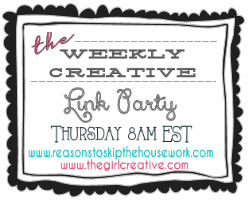If you need to review our previous lessons, you can find them here:
Lesson 1 - Fabric Selection | Lesson 2 - Sewing Your Greens
 | Lesson 3 - Cutting Your Triangles |
Lesson 4 - Basic Applique  | Lesson 5 - Sewing Your Triangles  | Lesson 6 - Advanced Machine Applique  |
So let's get started sewing our triangles together!
I like to lay my triangles out on the floor or a bed...whatever large open surface you have near your sewing area. That helps me make sure I sew the right pieces together. You'll want to lay them out roughly like this.
Then I pick the pieces up for one row in an organized way. You can start from either the right or the left side. I happened to start from the right side of one of the rows.
Just to make sure I sew the pieces together correctly, I like to lay them next to each other open, and then flip one piece over the other.
The main trick to sewing your triangles is all in how you line up the corners. Each of the triangles has two corners that are the same angle and one corner that is "pointier." I found it easiest to always line things up with the "pointier" end of the triangle we're adding.
It seems as though you'd just line them up with the tops touching, but if you do that, they'll look crooked when you open the seams up. We're actually going to have the corners off-set slightly. The place that we really need to be matched up is where our stitching line is, so we line up triangles so that the edges of the fabric cross right where our stitching line will be at 1/4 inch.
Then we sew with a 1/4 inch seam allowance. It will end up looking something like this:
Then you can open your pieces up and get ready to add the next triangle.
Flip the new triangle over the others and sew. Note that we're lining things up with the "pointier" end of our new green triangle this time, so you can see that green tip is extending just a little beyond the edge of the white triangle.
And from here we just repeat all the way down the row. If you're making a table runner, all you'll have will be this one row.
Once you've finished a row, you'll want to go back and clip the corners. Be careful not to cut through any of your stitching, but just snipping off those ends will make your quilt top less bulky where all those triangles meet.
Iron your seam allowances one direction, alternating the direction for each row. This will make it less bulky to sew through those areas as we sew our rows together.
Now we're going to sew our rows together, and I'm going to teach you a little pinning trick to make your corners match. This pinning trick can help to make your corners match in just about any quilt. When sewing quilts with square corners, I often don't bother with the pinning, but it's super helpful with this quilt.
You take a straight pin and put it through the two layers of your fabric, exactly where you'd like your stitching to go. This should be right at the "pointer" tip of one of the triangles. Ideally, it's also 1/4 inch in from your edge, but it might be a little more or less than 1/4 inch if your previous seam allowances were a little off. That's okay. We want our corners to match as close as possible, so go ahead and use that tip of the triangle.
As you start sewing, you'll want to make sure that you hold the two layers of fabric right together on the pin. They often come a little loose as you're maneuvering your fabric, so just make sure as each pin is "up next" to go through your machine that you hold those pieces of fabric right together.
And as it goes through the machine, you'll want your pin, so it's at a right angle to your fabric's edge.
And that's pretty much what you need to know to sew all your triangles together. Go ahead and sew your quilt top together, BUT DON'T ADD YOUR BOTTOM ROW YET!! (That's why there's a red line in the diagram above.)
Once you've got everything except your bottom row sewn, we're ready to add the tree trunk for our larger tree. We couldn't do this earlier because, this trunk will go over several pieces. Just like we did in Lesson 4 - Simple Machine Applique, we're going to iron our tree trunk backed with Heat'n Bond Lite (or similar) onto the top middle of our white section.
Then just as in Lesson 4 - Simple Machine Applique, we're going to do a satin stitch around the edge. Once you're done with the trunk applique, you're ready to sew your last strip on.
And you'll be ready for our next lesson which will be teaching you a few tricks for the more complicated star and Nativity Scene appliques. Which, I promise, I'm going to start typing it up as soon as this one is posted, so you don't have to wait very long. Thanks so much for hanging in there with me!!
For a Table Runner
If you've opted for sewing a table runner. You'll be doing the same thing, but you get to stop after one row! You're also going to replace one of the tree triangle with one of your background triangles, so there will be a gap where we can add our Nativity scene.
You also won't have any trunks on your tree yet...so we're going to pull out that extra 2-inch strip of your background fabric that we cut in Lesson 3-Cutting Your Triangles.
Arrange it below your strip with the trees. Now arrange your tree trunks on your background strip, so that on is centered below each tree. (You'll be using shorter tree trunk template to make your tree trunks. See lesson 4 for instructions.)
You could measure for precision, but I just eyeballed it.
Iron them on well. You'll probably want your tree strip there just to make sure the placement is right
Now you'll stitch around the tree trunks using the applique instructions in Lesson 4 - Simple Machine Applique.
And finally, you can sew your trunk strip onto your tree strip.

Then to get totally ready for our next lesson, you'll want to iron the seam you just sewed.
The tree trunks will tend to push the seam toward the trees, and the places where two trees and a background square come together will tend to push the seam toward the bottom. Rather than fighting it, I opted to iron it both ways
And you'll be ready for the next lesson dealing with the more complicated appliques.
Please show my sponsors some love...
I'll be linking to:


























































No comments:
Post a Comment
Thanks for taking the time to comment. I love hearing from you. I also love responding, so please make sure your Blogger account is set up for me to be able to see your email address or include your email address. I've had to stop accepting anonymous comments due to spam. If you don't have any other way to comment, you can always send an email.